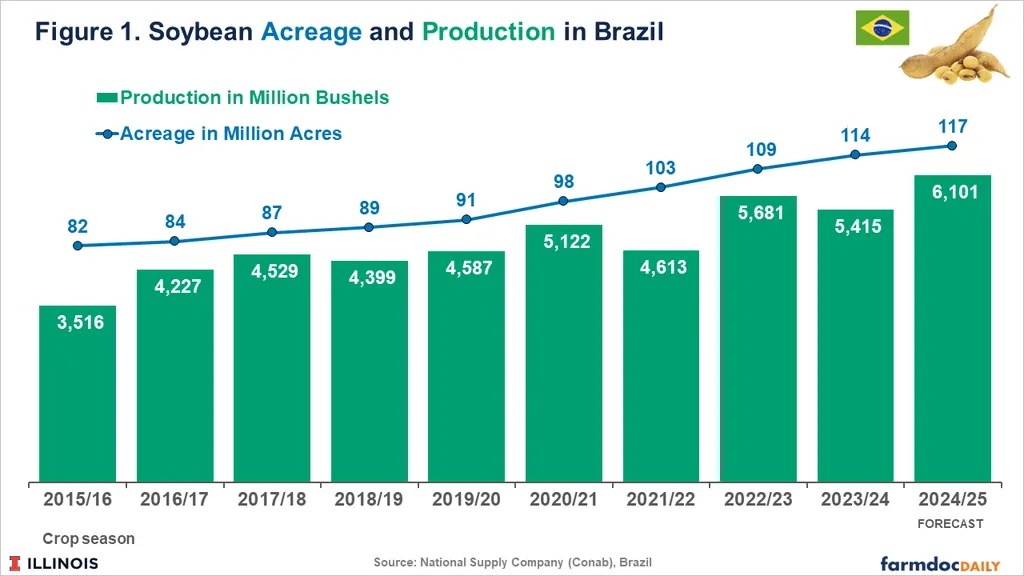In the heart of South America, a dramatic transformation has been unfolding over the past seven decades, one that has reshaped the continent’s landscape and its agricultural sector. A groundbreaking study, published in *Earth System Science Data*, has meticulously mapped this change, offering a detailed look at the expansion of major commodity crops and its profound implications for the region’s environment and economy.
The research, led by B. Xu from the Center for Earth System Science and Global Sustainability at Boston College, has reconstructed the historical dynamics of soybean, maize, wheat, and rice cultivation in South America from 1950 to 2020. By integrating multi-source data, including high-resolution remote sensing data and historical agricultural census data, the study provides a unique, spatially explicit, and time-series perspective on crop distribution shifts.
The findings are striking. Soybean and maize cultivation have expanded rapidly, encroaching on other vegetation types such as forests, pastures, and unmanaged grass/shrublands. “Soybean is one of the most dramatically expanded crops,” Xu notes, “increasing from essentially zero in 1950 to 48.8 million hectares in 2020, resulting in a total loss of 23.92 million hectares of other vegetation.” Maize, too, has seen significant growth, with its area increasing by a factor of 2.1 over the same period.
These changes have substantial commercial impacts for the agriculture sector. The rapid expansion of soybean and maize cultivation reflects the growing global demand for these crops, driven by their use in food products, animal feed, and biofuels. This trend is likely to continue, shaping the future of South American agriculture and its role in the global market.
Moreover, the study’s high-resolution, long-term, and crop-specific datasets are instrumental for assessing the impacts of cropland expansion on crop production, biodiversity, greenhouse gas emissions, and carbon and nitrogen cycles. “These data are crucial for developing national policies, sustainable trade, investment, and development strategies,” Xu explains, “aimed at securing food supply and other human and environmental objectives in South America.”
The implications of this research extend beyond the agricultural sector. By providing a detailed understanding of human-environment interactions, the study offers valuable insights for policymakers, environmentalists, and investors. It underscores the need for sustainable practices that balance agricultural growth with environmental conservation, ensuring the long-term health of South America’s ecosystems and the communities that depend on them.
As the world grapples with the challenges of climate change and food security, this research offers a timely reminder of the profound impact that agricultural practices can have on the environment. It also highlights the importance of data-driven approaches in shaping sustainable development strategies. By making the datasets available to the public, the researchers are empowering stakeholders to make informed decisions that can drive positive change.
In the words of Xu, “This study is a call to action. It’s a reminder that our choices today will shape the future of our planet, and we must strive for a balance that supports both human prosperity and environmental sustainability.” As we look to the future, the insights from this research will be invaluable in guiding the development of a more sustainable and resilient agricultural sector in South America and beyond.

